Populus Tremula: [Cultivation, Care, Pests and Diseases]
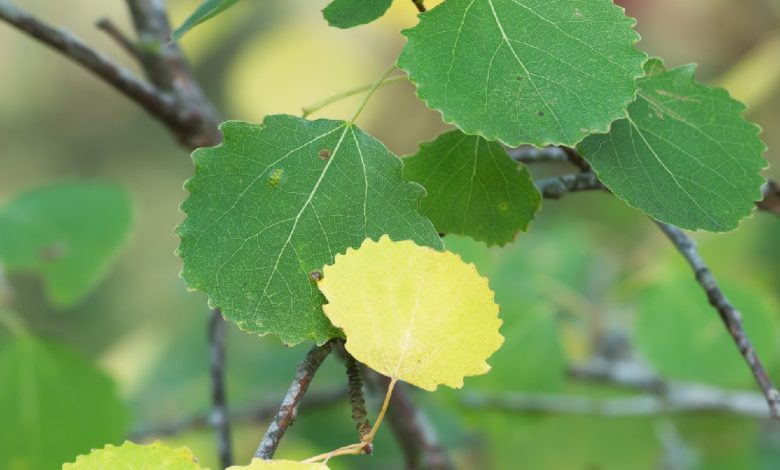
The Populus Tremula is a very useful tree, both at an ornamental level and to fulfill support functions in gardens.
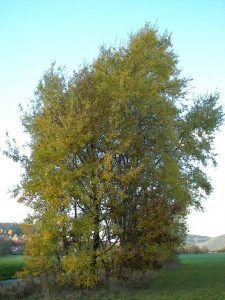 It is quite easy to grow and adapts to temperate climates, which allows it to withstand low temperatures. If it grows strongly, it rises quite high, offering shade thanks to its dense crown.
It is quite easy to grow and adapts to temperate climates, which allows it to withstand low temperatures. If it grows strongly, it rises quite high, offering shade thanks to its dense crown.
Would you like to have one of these specimens in your garden? Write down the entire process to sow and take care of it that we guide you here.
What is Populus Tremula?
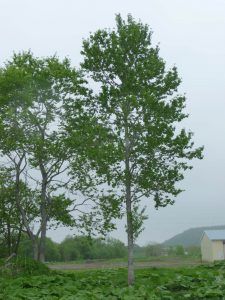 The Populus Tremula is a species with green leaves that can grow up to 30 meters. It has a preference for temperate climatic zones because its origin is in some Asian and European areas.
The Populus Tremula is a species with green leaves that can grow up to 30 meters. It has a preference for temperate climatic zones because its origin is in some Asian and European areas.
In fact, its planting is very abundant in areas that exceed 900 meters above sea level. Thanks to its height, it is capable of offering a service as a windbreak tool in areas where it affects too much.
Its leaves are green that turn yellow in autumn before falling. They tend to be wider than long. It also generates inedible flowers and fruits. In some areas it is also known as Trembling Alamo.
It is worth saying that it is a species that could give work to grow from its sowing, but it multiplies quickly.
Where should we plant it?
The space to sow the Populus Tremula must allow access to sunlight, without restrictions.
It is also important that it is at a good distance from other plant species, so that it does not have difficulties in accessing nutrients. Although it is very good to serve as a windbreak, it is best that these are not the product of marine action.
When should Populus Tremula be cultivated?
The best time for its cultivation is between the beginning of spring and the end of summer.
Since it withstands cold climates very well, it is not essential that it be strong enough before the arrival of autumn.What is important is that the soil maintains good humidity during the hottest season, for example if it is sown in summer.
How do we prepare the land?
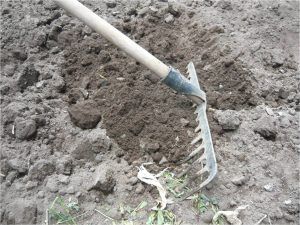 Populus Tremula is undemanding about soil conditions.It is capable of adapting to medium acidic pH, but must be rich in nutrients.
Populus Tremula is undemanding about soil conditions.It is capable of adapting to medium acidic pH, but must be rich in nutrients.
And it is on the matter of nutrition that we must focus our attention, preparing the area where it will be planted with homemade compost.
To ensure that organic matter penetrates, irrigation and constant soil removal are essential. Finally, it is worth knowing that it will grow well even if the soil is shallow and heavy, but it is always better if it has good drainage.
How to sow a Populus Tremula step by step?
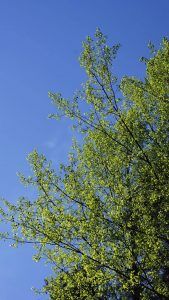 The planting will have to be done from cuttings taken from the species that you want to obtain or by buying harvest seeds. The reason for this is to make sure you get a tree that is of good character and not a hybrid.
The planting will have to be done from cuttings taken from the species that you want to obtain or by buying harvest seeds. The reason for this is to make sure you get a tree that is of good character and not a hybrid.
Cuttings do not have a 100% chance of developing. Actually, the rate is quite low. This leads to the best option being to perform the multiplication in quantity, which will ensure a higher probability of success.
Specialists recommend taking a large number of cuttings in November for this purpose.
What care does the Populus Tremula need?
Irrigation
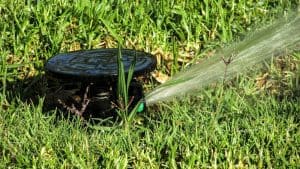 The main care of the Aspen has to do with irrigation, since they are very fond of a constant rhythm of access to water.
The main care of the Aspen has to do with irrigation, since they are very fond of a constant rhythm of access to water.
For this to happen correctly, it is best to use plenty of water that penetrates its roots, but without flooding. It is important that the soil can offer a good drainage system.
Take care that the water reaches the trunk and the roots
Another relevant issue in this process is ensuring that the water reaches the trunk and its roots, avoiding contact with the leaves, since diseases could be generated.
Pruning
Another care that we can offer has to do with pruning, since at times they can behave in an invasive way. In the event that a tree begins to propagate offspring, these can be removed to prevent them from filling the entire garden.
use mulch
Regarding the growth of weeds that affect their access to nutrients, it is best to use mulch. In fact, mulch is a great strategy because it will also help keep moisture in.
What pests and diseases attack Populus Tremula?
leaf spot
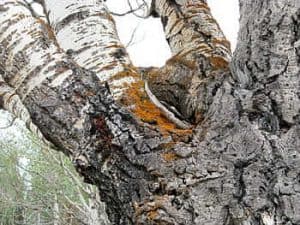 The main disease that attacks the Trembling Aspen is leaf spot. This condition is caused by various fungi, producing in most cases red or brown spots.
The main disease that attacks the Trembling Aspen is leaf spot. This condition is caused by various fungi, producing in most cases red or brown spots.
These are not lethal to the tree if they are treated quickly, removing the contaminated branches. However, when the plant is continually affected, this disease could cause its premature death.
To prevent it from appearing, the best recommendation is to ensure that numerous plantations maintain sufficient space between specimens.
In this way, the air is able to circulate easily and this allows health conditions to be optimized. Another important detail is to prevent the foliage from getting wet during irrigation, since moisture on the leaves is counterproductive.
verticillium wilt
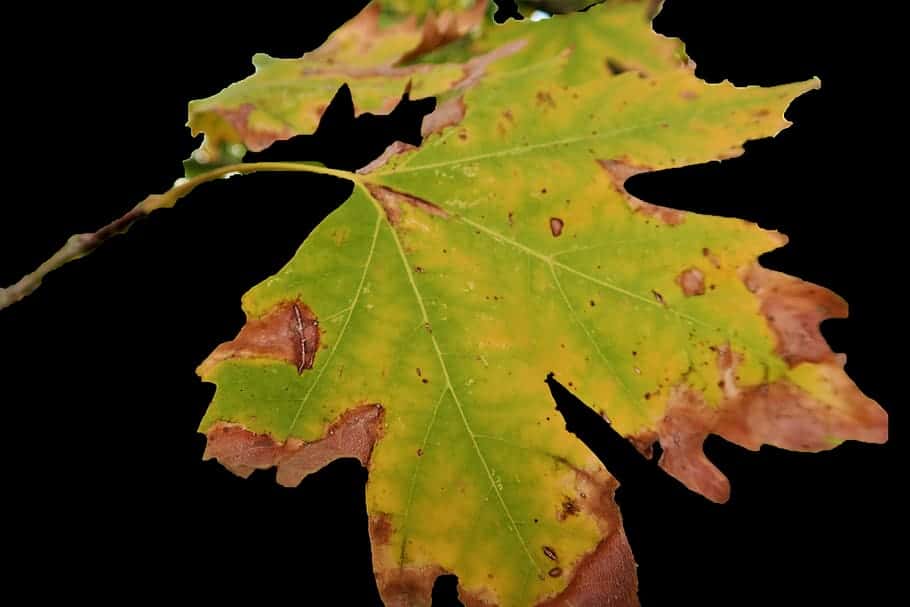 Verticillium or Verticillium wilt is a common soil fungus that thrives in temperate climates around the world and can be present in the soil for decades.
Verticillium or Verticillium wilt is a common soil fungus that thrives in temperate climates around the world and can be present in the soil for decades.
Verticillium wilt overwinters in the soil as dormant mycelium or tiny dormant black structures called microsclerotia, waiting for favorable conditions to return.
They enter damaged plant tissue through the roots and multiply. Many common weeds, such as dandelions and weeds, can be Verticillium host species.
Verticillium wilt is a disease that affects more than 350 species of eudicolous plants. It is caused by six species of Verticillium fungi: Verticillium dahliae, Verticillium albo-atrum, Verticillium longisporum, Verticillium nubilum, Verticillium theobromae, and Verticillium tricorpus.
Many plants with significant economic weight are susceptible, such as cotton, tomatoes, potatoes, oilseed rape, aubergines, peppers, and ornamental plants, as well as others in natural vegetation communities.
Many species and cultivars of eudicots are resistant to the disease, and all monocots, gymnosperms, and ferns are immune. To know more: Verticillium wilt in the Orchard: What is it? How do we identify it?
pests
As for pests, it shows very good resistance and just applying an ecological insecticide if any appear will be more than enough. Populus Tremula is sometimes used for protection purposes for other species, in addition to helping in the recovery of very damaged soils.
This means that it will receive the greatest amount of sunlight and there are no problems with that, as long as you take care that the temperatures are not too high.
How long does populus tremula live?
They are very long-lived trees that, under ideal conditions, can live up to 450 years, giving life to many more specimens.
How long does it take to grow populus tremula?
It is fast growing, being able to reach great height with only 3 or 4 years from its cultivation, although it could take up to 6 years for its total height.
How long does it take to produce fruit?
It can take up to 3 or 4 years to bear its first fruits, although some specimens may take longer, depending on their conditions.
Can it be grown in a pot?
It is not a recommended species to be grown in a pot, since it needs a lot of space to develop and grow very fast.
Despite this, for a few years it can be kept in a pot, always outdoors and taking care that it does not grow too much.
How many times does populus tremula produce fruit?
The fruits are produced only once a year by the female specimens, as long as the flowers are pollinated correctly.
Should populus tremula be pollinated to obtain fruit?
Yes, the plant requires pollination, since it has male and female specimens.
This process is carried out almost entirely by the wind, the intervention of insects or other animals being very rare.
How cold can populus tremula tolerate?
It is a mostly cold climate tree, being able to resist long winters of up to minus 15ºC, losing all its leaves in the process.
How many populus tremula can be planted per hectare?
This tree has problems sharing nutrients from the soil, so adequate space must be left between each specimen.
In general, it is not advisable to have more than 150 specimens in one hectare of land, avoiding problems.
What type of fertilizer does populus tremula need?
It has no special needs in terms of fertilizers.
However, providing organic compost once a year helps it stay healthy and develop properly.
How much heat and/or drought can Populus tremula tolerate?
Excessive heat usually causes damage to this specimen, and it is recommended that it be kept at a maximum temperature of 26ºC.
When talking about drought, it is important to point out that they are not tolerant to lack of water, needing constant humidity.
Bibliography and references
- Sierra de Grado, Rosario. (2002). Trembling aspen (Populus tremula L.): bases for its cultivation, management and conservation. Mundi-Press editions. Madrid Spain.
- Lastra Fernandez, Juan Jose. (2001). Natural forests of Asturias. Oviedo University. Asturias-Spain.
- Calderon Mediavilla, Raul. (2016). In vitro culture of Populus tremula L.: Influence of the culture medium on the conservation of plant material. University of Valladolid. Palencia-Spain. Reproduced from: https://uvadoc.uva.es/bitstream/10324/21592/1/TFM-L312.pdf
- Gomez Garay, Aranzazu; Pintos Lopez, Beatriz; Grau Corbi, José Manuel; Well Pérez, Mª Angeles. (2014). Micropropagation of Populus tremula L. Faculty of Biological Sciences. Department of Plant Biology I: Plant Physiology. CIFOR-INIA. Madrid Spain. Reproduced from: http://www.revistareduca.es/index.php/biologia/article/view/1594/1615
- Escudero, Claudia Eliana; Sierra de Grado, Rosario. (2010). Conservation of genetic resources of Populus Tremula L. in Castilla y León. Plant Production Department, ETSIIAA. University of Valladolid. Palencia-Spain. Reproduced from: uva doc.uva.es/bitstream/handle/10324/11636/TRIM-REV-INVESTG-MULTIDISCIPL-2010-1-ConservacionDeRecursosGeneticosDePopulusTremulaLEn%20.pdf?sequence=1&isAllowed=y»>http://uvadoc.uva.es/bitstream/handle/10324/11636/TRIM-REV-INVESTG-MULTIDISCIPL-2010-1-ConservacionDeRecursosGeneticosDePopulusTremulaLEn%20.pdf?sequence=1&isAllowed=y
[pt_view id=”f54fcb1evj”]

![Photo of Zucchini Varieties: [Characteristics and Classification]](https://www.complete-gardening.com/wp-content/uploads/2021/06/Caracteristicas-del-calabacin-390x220.jpg)

![Photo of Iris Germanica: [Planting, Care, Irrigation, Substrate and Pests]](https://www.complete-gardening.com/wp-content/uploads/2022/08/iris-germanica-planting-care-irrigation-substrate-and-pests-390x220.jpg)
![Photo of Portulaca: [Cultivation, Irrigation, Associations, Pests and Diseases]](https://www.complete-gardening.com/wp-content/uploads/2022/08/portulaca-cultivation-irrigation-associations-pests-and-diseases-390x220.png)